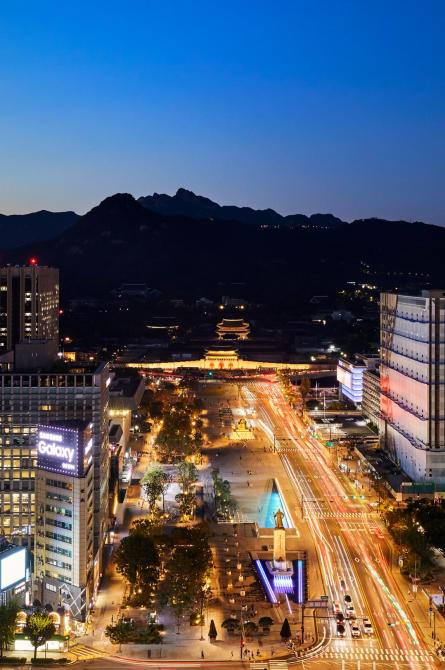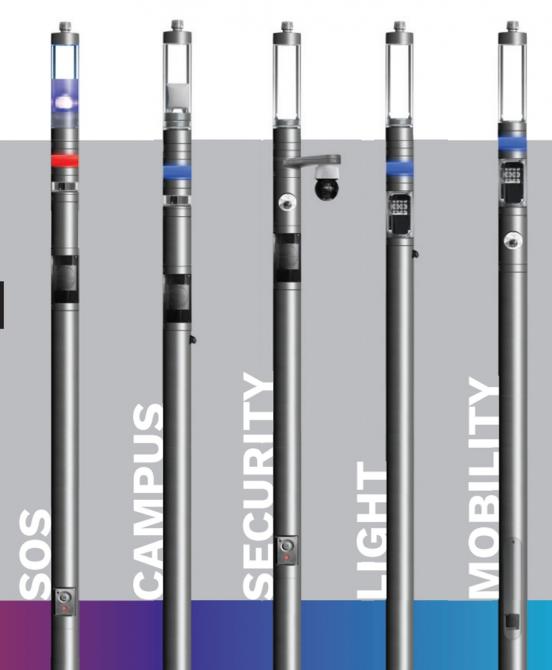Magazine
Design incorporates objects, people,
ideas based on the small pleasures of everyday life.
Meet your wonderful design world with the DDP Design Fair.






Lighting Design Trends in the Public Sector
LIGHT.FAB CEO Jeong Seungmoon
Streetlights will be the most common design service offered by public institutions such as cities or municipalities. Streetlights allow citizens to walk safely and vehicles to drive safely through streets lit up at night. Let's take a look at how the design of streetlights has evolved from the past to today.
A person climbs up a ladder and cleans a street lamp. This is one of the scenes in the 1800's. At that time, street lights were lit with gas or oil. Next is a street lamp designed by the Spanish architect Antoni Gaudí. You can still see this at Barcelona Park. This street lamp gives off a yellowish flame when the light is on.
You will be able to find old images taken of Seoul from the 1930s, but you will not be able to find streetlights in street photos until the 1950s. However, there were gas lights or incandescent light bulbs even during this period, so you would be able to find small security lights near cafés and around the streets. Streetlights began to appear on the streets of Seoul in the 1960s. If you look at photos from the late 1960s, you can see streetlights at the Gwanghwamun Square. You can also see street lights and traffic lights around Seoul City Hall. At that time, traditional yellow sodium lamps were used for streetlights. Such street lamps with yellow lights were installed in almost every area of Seoul.
The first streetlights at the Gwanghwamun Square in the late 1960s continued to be installed until the 1970s. The street lamps you see at this time are Sejongno-type octagonal tapered poles. I call this Sejongno-type octagonal tapered pole an “immortal masterpiece”. The lamp was 12 meters high. It was very difficult to make a pole of this height with the technology at that time. In fact, this design came from a product supplied to Asia by Philips, a Dutch company, in partnership with a Japanese company. Street lamps modeled after this product have been used in Korea until now.
Due the advancement of technology in 1980, the light color of street lamps changed from yellow to white. If you look at photos from the 1980s, you can see a design with a hole drilled under the street lamp. A lot of flying insects are attracted to the white-colored light. In order to prevent this, the lower part of the street lamp started to be opened. Plastic glass first appeared In the 1980s. The glass part of Sejongno-type street lamps has been replaced with plastic, but the overall design stays the same until the 1990s.
In the 2000s, we started to see small changes in the design of lighting fixtures. Sejongno-type lighting fixtures were gone and colored lamp heads started to appear at the Gwanghwamun Square. As the 2000s come to an end, there was no major change in the lamp post, but a slight change in the head color.
From 2010, we started to witness various changes in street lamps. The head shape of street lamps at the Gwanghwamun Square has been changed to a circular shape and other various shapes. Above all, the biggest change is that it has started to be replaced with LED lamps. Since the price of LED lamps is higher than that of conventional sodium lamps, 5 pieces, 6 pieces and 10 pieces of 25W modules were arranged in the lighting fixture in order to lower the price. Since then, lighting fixtures mounting an array of modules have spread across Korea. I've seen this modular system only in Korea. A lot has happened, such as supplying lighting for American stadiums, since the active development of module systems in Korea. The color of the lamp has also become more diverse. In the past, the range of color temperature was standardized at around 3000K, where the light appears yellow, but now, if you look at the streetlight lamps in the Gwanghwamun Square, their color temperature is maintained through a more diverse range at around 4000-4500K.
Let's take a look at the current trends to see how streetlights will change in the future. First of all, if you go to the recently opened Seoul Botanic Park located in Magok, you can see many multi-pole style lighting fixtures. It has several heads attached, so it looks like a flower bud. In addition to the change in design, these days, many features are embedded in one pole, which is called a smart-pole. It is a system that installs security cameras, emergency bells, public Wi-Fi, speakers, etc. on street lamps all at once. Many features are installed on a single pole at once due to cost. How much does it cost to install a pole? A traffic light costs 25 to 40 million won while a street lamp costs about 10 million won. You might think it would not cost much to install a street lamp, but the actual cost is surprisingly high. Since the cost is high, features that used to be installed separately are installed all at once on a smart street lamp. The Seoul Metropolitan Government’s policy requires smart street lamps to be installed in parks. I think all systems will be converged like this in the future.
Lighting seems to be a very difficult field for the general public with limited information available. Among them, the design of street lamps, especially in the public sector, is very exclusive. It is very difficult to acquire new customers. Lastly, I would like to offer some good information to those who are interested in this field or want to pursue this career. Please take a look at “Light and Building”, which is the world’s largest lighting exhibition held every two years in Germany. If you have a chance, I would like to recommend you to attend this exhibition and enjoy various experiences.
| 이전글 | Sustainable Designs Through Collaboration |
|---|---|
| 다음글 | Unique Wireless Earbud Designs |







